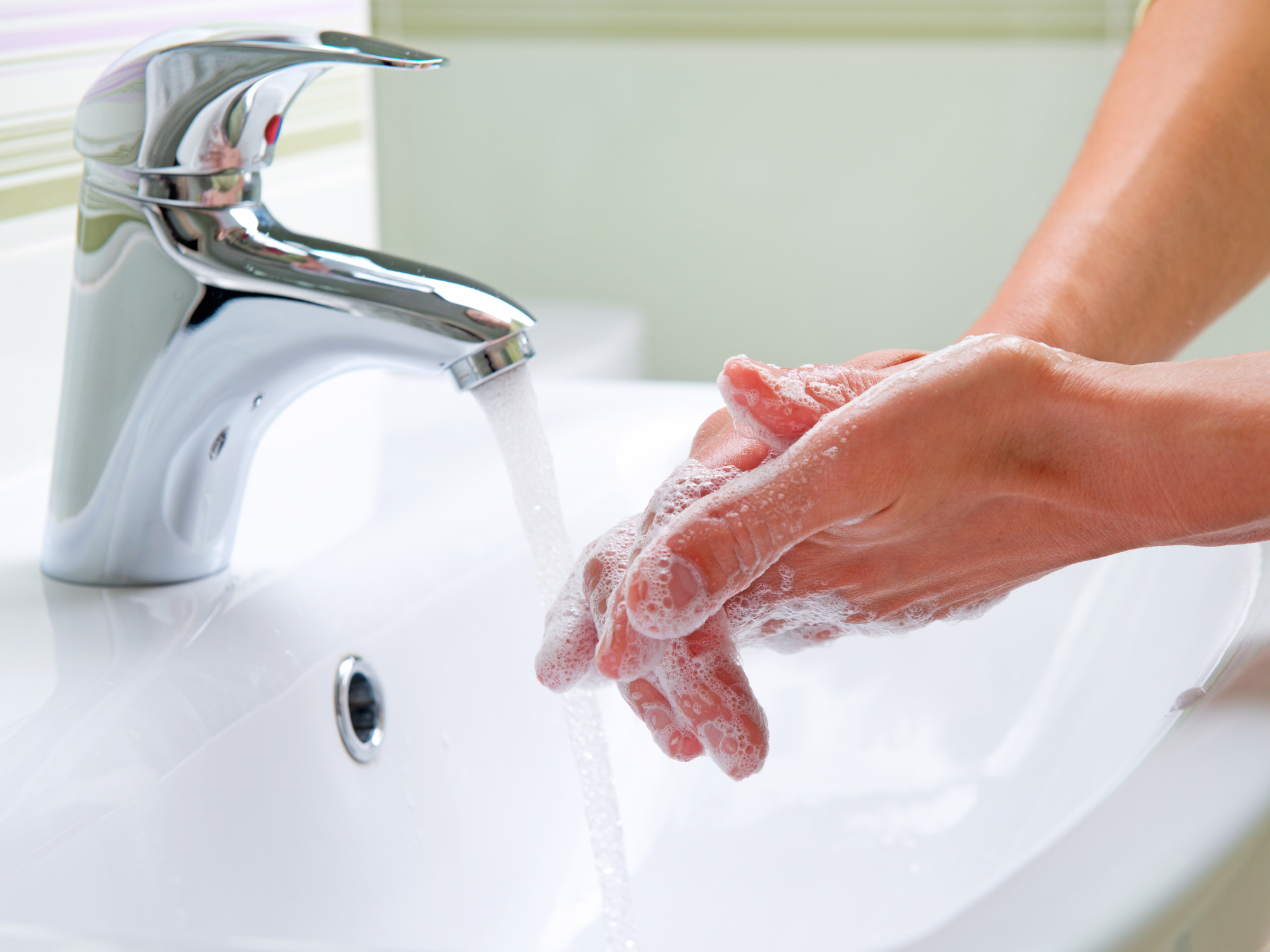Proper and frequent handwashing is one of the most effective ways to prevent the spread of disease. It’s easy to do handwashing right when you know how, and it can help you avoid spreading germs in the home, the workplace and in hospitals. Keeping your hands clean can keep illness and infection from jumping from one person to another. The following tells you when and how to wash your hands.
When to Wash
Fecal material from both humans and animals is a significant source of disease carrying germs. In fact, a quantity of feces weighing no more than a paperclip contains hundreds of billions of germs. To prevent the spread of such germs, it’s important to wash your hands frequently, particularly in the circumstances should mentioned below:
• Prior to, during, and following the preparation of food
• Prior to consuming food
• Prior to and after caring for someone who has an illness
• Prior to and after treating a wound or injury
• After using a toilet
• After changing a child’s diapers or cleaning a child who is just used the toilet
• After sneezing, coughing, or blowing your nose
• After having contact with animals, animal feed, or animal feces
• After bagging or carrying out the garbage
The Correct Procedure for Handwashing
If you want to wash your hands thoroughly and correctly every time, use the following steps:
1. Place your hands under either cold or warm water, turn on the tap, and apply a bit of soap to your hands. Keep in mind that your hands could be re-contaminated if you place them in a basin filled with standing water. Standing water could have been contaminated by a previous user, which is why clear running water is preferable. However, even non-potable water is preferable for handwashing if clear water is not available.
2. Rub your soapy hands together to create a lather. Scrub between your fingers and even the back of your hands. Don’t forget to scrub underneath your nails. While germs can be found all over your hands, they are particularly concentrated underneath your nails. Building up a lather and vigorously scrubbing your hands generates friction. This will lift away grease, dirt and germs from the surface of your skin.
3. Continue scrubbing your hands for a minimum of 20 seconds. Since finding the perfect time for handwashing is difficult to do scientifically, there aren’t many studies that have been done looking at variations in handwashing times. However, those that have been done have revealed significant reductions in the number of germs found. The ideal handwashing time depends on a number of factors, including the type of soil or contaminants on the hands and the setting or circumstances in which the individual is washing his or her hands. For instance, a man preparing his lunch in his own kitchen will not need to wash his hands for as long as a surgeon. The surgeon is much more likely to be in contact with disease carrying bacteria or germs and might be at risk of transmitting such microbes to patients. Nevertheless, research does seem to suggest that washing one’s hands for approximately 20 seconds will remove more contaminants and germs from the skin than washing for a shorter time.
4. After scrubbing, thoroughly rinse both hands under clear, running water. While the friction and lather help to lift away the grease, dirt and germs from your skin, they need to be thoroughly rinsed away to be actually removed from your hands. The added benefit of rinsing your hands is that potentially irritating soap is removed as well. Use a paper towel or toilet paper to turn off the faucet after you have rinsed your hands. This helps prevent your hands from being re-contaminated.
5. Use either a clean, dry towel or wall hand drying unit to dry your hands. You need to ensure that your hands are thoroughly dry, since it is easier to transfer germs to – or from – hands that are wet. The best and most effective method for drying hands is unclear, and the results of the studies conducted on this subject contradict one another. Most of these studies focus on overall numbers of microbes on the hands, rather than specifically on germs that actually cause disease. Nevertheless, research does seem to suggest that air drying hands or using clean towels are the best options.
How to Wash Hands If You Don’t Have Clear, Running Water or Soap
We all know that washing your hands with soap and clean water is the best way to limit the spread of germs and disease. But if clean water and soap are not immediately available, you can also use alcohol-based hand sanitizers – although the alcohol content should be at least 60%. In certain situations, these types of hand sanitizers can significantly reduce the numbers of germs on the surface of your hands. But keep in mind that even alcohol-based hand sanitizers cannot eliminate all germs.
Also, these hand sanitizers are less effective when your hands are particularly greasy or dirty. They also probably won’t remove dangerous chemicals or substances, such as heavy metals or pesticides. It’s also important to note that the rubbing alcohol used in the sanitizers is hazardous if swallowed. To use hand sanitizers properly, you should do the following:
1. Read the product label and apply the recommended amount to one palm of one hand.
2. Vigorously rub both hands together.
3. Ensure that you have rubbed the hand sanitizer across the entire surface of both hands and continue doing so until your hands are fully dried.
With new diseases and new drug resistant bacteria appearing regularly, it makes sense to do everything we can to minimize the spread of disease in our society. Thoroughly and systematically washing your hands will help reduce the chance that you’ll pass on germs to anyone in your family or community.
